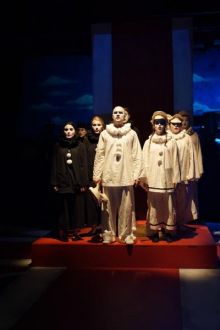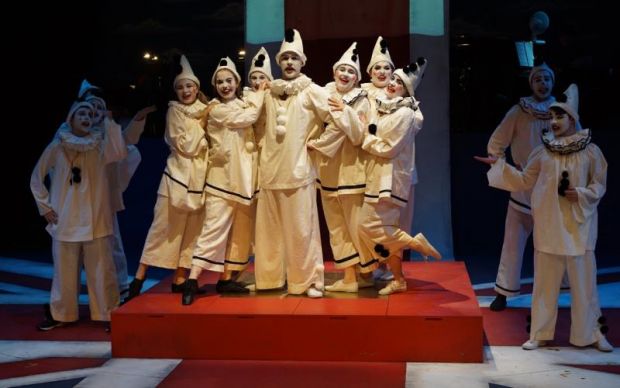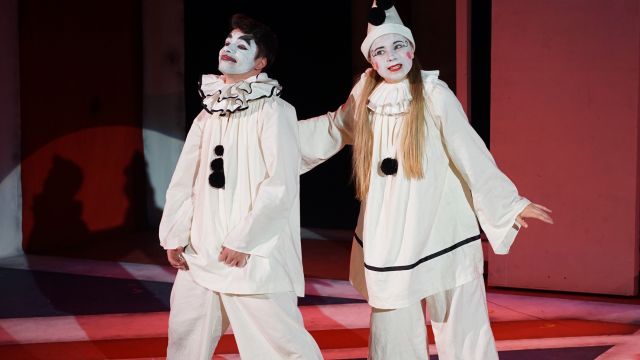Oh, What a Lovely War!
It’s fifty-five years since Joan Littlewood’s company workshopped new lyrics to wartime songs to highlight the brutality and pointlessness of World War I. The juxtaposition of jolly cabaret with the death statistics still packs the proverbial punch.
Canberra REP’s production of the classic sticks closely to the original, preserving the Pierrot costumes and minimalistic set. What makes it a fresh and vibrant interpretation is the youthfulness of the cast, the majority of whom are in their teens or twenties (which was also reflected in the audience, the average age of which was a good decade younger than REP’s usual crowd). This production leans more towards the surrealist music hall comedy side of the script, and ironically this has the effect of making the tragedy all the more poignant in contrast. The Irish troop scene (with the very funny Kate Blackhurst as captain) is simultaneously blackly hilarious and utterly tragic.
 The program didn’t list songs or singers which makes it a little challenging to identify the stand outs, but Keren Dalzell blew me away with her gorgeous crystal-clear bell of a voice, using perfect 1910s music hall vibrato and phrasing. Meaghan Stewart’s Belgium Put the Kibosh up the Kaiser was character-filled and memorable.
The program didn’t list songs or singers which makes it a little challenging to identify the stand outs, but Keren Dalzell blew me away with her gorgeous crystal-clear bell of a voice, using perfect 1910s music hall vibrato and phrasing. Meaghan Stewart’s Belgium Put the Kibosh up the Kaiser was character-filled and memorable.
Holly Ross’s rendition of I’ll Make a Man of You was spine-tingling and surprisingly raunchy, given her youth. The ensembles’ Sister Suzie’s Sewing Shirts had the audience singing along with enthusiasm and 15-year-old Katy Larkin’s lively dance and sweet voice mark her as another young talent to watch.
The emotional centre of the play, the Christmas Armistice scene, was handled with alternating humour and foreboding, formality and relief.
Dominating the set were two mobile scaffolding towers with bridge sections that could be lowered and locked into place, or (in the case of the duet Rose of Picardy) were rolled around the stage with the singers on top. In one very funny scene the actors were marionettes, while puppeteers worked them from the scaffolding above.
It feels a bit odd to say that a show highlighting the folly that led to the deaths of at least ten million people is a lot of fun, but it was.
Cathy Bannister

Subscribe to our E-Newsletter, buy our latest print edition or find a Performing Arts book at Book Nook.

